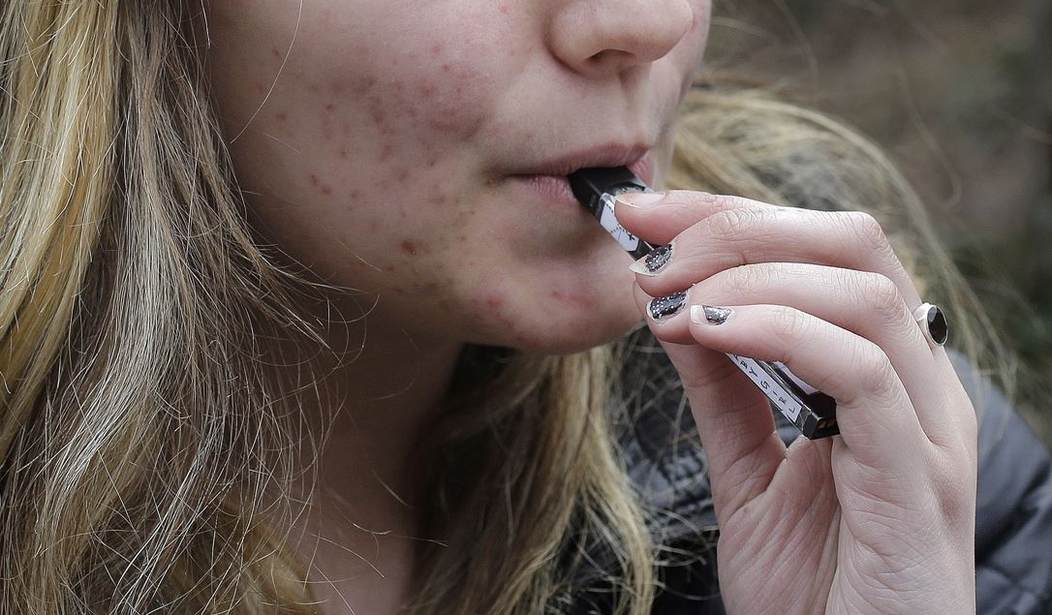Massachusetts, New Jersey, New York, and Rhode Island are the only states that ban the sale of flavored e-cigarette products. Citing the then-so called “youth vaping epidemic,” lawmakers were quick to ban flavors in these tobacco harm reduction products, purporting that flavors were only meant to attract youth.
The actions of those four states are based on hysteria, not science. There is a plethora of evidence from foreign government public health agencies that finds vaping to be significantly less harmful than combustible cigarettes. Numerous studies have also found that flavors in these products both help adults transition away from combustible cigarettes, as well as assisting them in maintaining cessation.
Despite this data, lawmakers in those states (and many others) continue to push efforts to limit adult access to such products. While responding to youth use of any age-restricted product is commendable, youth vaping has declined without draconian prohibitions. Further, and alarmingly, in states that have banned flavors in vapor products, smoking among young adults is increasing which should cause more concern than the fake youth vaping epidemic.
The Centers for Disease Control and Prevention (CDC) annually conducts the Behavioral Risk Factor Surveillance System Survey, which tracks several health and lifestyle indicators among American adults, including smoking status.
In 2021, 14.4 percent of American adults were currently smoking. This is a 7.1 percent decrease from 2020’s 15.5 percent. Among young adults (aged 18 to 24 years old), a miniscule 7.4 percent were current smokers. This is welcome news because in 2000, just over two decades ago, nearly one-third (30.8 percent) of young adults were smoking.
Even better, among all states (minus Florida), smoking rates among adults aged 18 to 24 years old decreased by 19.7 percent on average between 2020 and 2021. In fact, only nine states saw young adult smoking rates increase during the same period. Alarmingly, three of those states are home to flavored e-cigarette bans and lawmakers should avoid pushing prohibitionist flavor policies forward.
Recommended
In Massachusetts, 7.4 percent of 18- to 24-year-olds were current smokers in 2021. This is an 8.8 percent increase from 2020 when only 6.8 percent of young adults in the Bay State were currently smoking. In New York, young adult smoking rates increased by 12.7 percent from 5.5 percent in 2020 to 6.2 percent in 2021. In Rhode Island, between 2020 and 2021, smoking rates among young adults aged 18 to 24 years old increased by 5.7 percent.
Of the four states with active flavored e-cigarette bans, only New Jersey saw a reduction (6.8 percent) in young adult smoking rates. This is significantly lower than the average rate of reduction among all U.S. young adults.
The increases should be alarming. Since 2017, when the infamous JUUL took over e-cigarette market share, young adult smoking rates have decreased by 47.2 percent, with average annual declines of 14.5 percent. Yet, in three states with active e-cigarette flavor bans, young adult smoking rates are rising.
State lawmakers must pay attention to the data – not headlines which continue to purport a youth vaping crisis. According to the CDC, only 9.4 percent of middle and high schoolers were current vapers in 2022. This is a whopping 53 percent decrease from 2019 when one-fifth of American youth were vaping.
Even better, youth are not picking up combustible cigarettes. While the CDC is currently sitting on data from the 2022 survey on youth cigarette use, many state surveys have found significant declines in smoking rates. For example, in Indiana, only 2.4 percent of high school students were currently smoking in 2022, a 48.4 percent decline from 2020.
Vaping, and other tobacco harm reduction products, are significantly less harmful for adults who smoke. In the UK and New Zealand, public health agencies have embraced vaping as a tool to help adults quit smoking. In fact, in Britain, the government subsidizes vapor products and one can even find vape shops in hospitals.
Many e-cigarette opponents have falsely decried that youth vaping leads to youth smoking, yet the data indicate otherwise. Barriers to adult accessing vapor products is what leading to an increase in combustible cigarette use among young adults. Unless lawmakers want to envision a world where more young Americans are smoking, they need to embrace novel tobacco harm reduction products, especially flavored e-cigarettes.
Lindsey Stroud is Director of the Taxpayers Protection Alliance’s Consumer Center.
























Join the conversation as a VIP Member